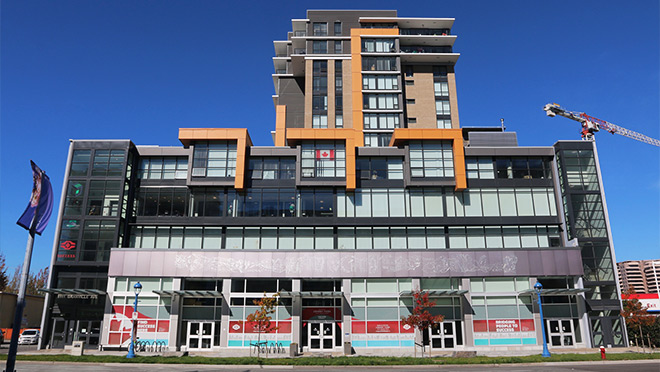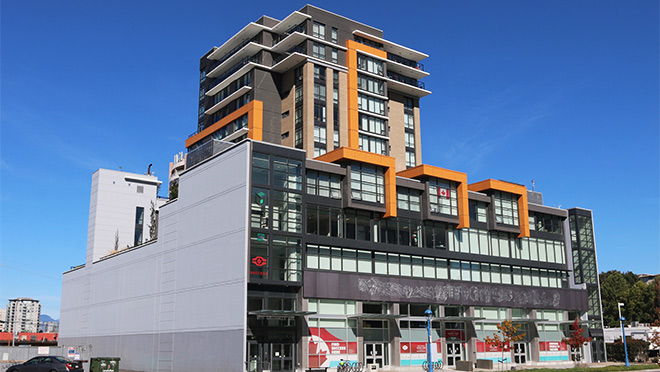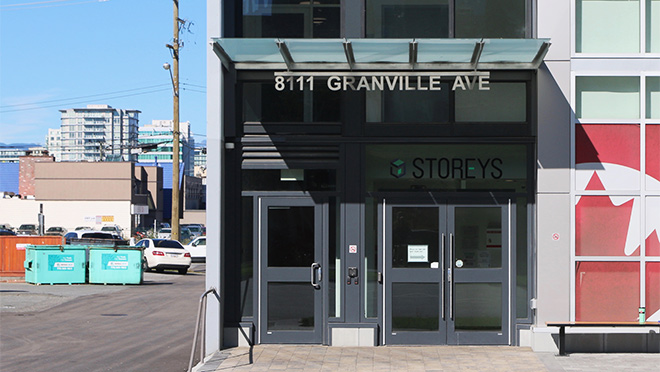Storeys: Pushing the building envelope for affordable housing

The story of Storeys
Storeys is a new, subsidized rental housing building in downtown Richmond, BC. The 129 unit development was unique collaboration funded by the City of Richmond, along with the federal and provincial governments and a non-profit consortium made up of the Atira Women's Resource Society, Coast Mental Health, S.U.C.C.E.S.S. Affordable Housing Society, Tikva Housing Society and Turning Point Housing Society. Collectively, these organizations support a wide range of vulnerable groups, from young families to people battling mental health and addiction issues.
BC Housing, with over 50 years of affordable housing experience, was responsible for orchestrating the project. Along with the help of BC Hydro's Commercial New Construction Program, they aligned all the stakeholders around the dilemma of achieving maximum energy efficiency on a limited budget.
Bill MacKinnon, Senior Energy Manager at BC Housing, notes: "Non-profits want to save energy. Tenants that live in our buildings are concerned about energy savings. But with all the other issues that non-profit tenants have to deal with in their lives, and the pressures that non-profit societies are dealing with, energy doesn't always end up at the top of the list of concerns."

Balancing cost and savings
As BC Housing was not the primary funder on this project, energy conservation measures needed to be negotiated with the City of Richmond and the societies. So Bill MacKinnon got BC Hydro involved right at the first stages of planning. "Being at that very early schematic design meeting gave us the opportunity to meet the non profits, the designers and the architects." says Bill. "The BC Hydro team explained the Commercial New Construction program and questioned the designers about their intended window to wall ratio and the types of lighting and heating."
Understanding the budget, architectural parameters and the objectives of a new building enables the energy modelling provided by BC Hydro's Commercial New Construction program to drill down to a very granular level.
Oscar Ceron, Program Manager with BC Hydro explains: "The Energy modelling process allows customers to explore options, and make informed design decisions that impact costs and energy performance."
This early work had a significant impact on the project, particularly on the building envelope, which features:
- A reduced window-to-wall-ratio. Most new residential high-rises are 80-90% windows. The Storeys building is below 40%.
- Improved roof and wall insulation.
- Heavy LED lighting usage combined with smarter lighting density, controls and occupancy sensors.
- High efficiency electric pumps.
- Demand-controlled ventilation using CO2 sensors.
- Heat recovery ventilation.
- Variable speed drives on domestic water booster pumps.
- Low flow fixtures for plumbing to conserve hot water.
"What works best for operators?" asks Bill. "It's simple electric baseboard heating combined with a well-insulated building envelope. When you do a good job on the glazing and insulation, you don't need complex mechanical systems to make up for a leaky building envelope. Baseboard heating isn't efficient in itself, but when you've done all those other things to improve the efficiency of the design, you need far less energy to heat."

And the story doesn't end here
Storeys is now fully occupied, providing safe, warm accommodation and a sense of community to those who need it most. There's also a cafe on the ground floor that's open to the public, serving coffee and food to help raise funds.
Inspired by the success of Storeys and several other recent projects, BC Housing has incorporated even higher standards as common practice. "Bringing the BC Hydro team to the table while we still had a lot of leeway was really helpful." says Bill. "It's a good challenge for the designers to have a third party that pushes them to find even more energy efficient measures."
Oscar Ceron agrees: "Commercial New Construction is a very popular program because when you embed practices in early design, and people see the benefits, it grows. You have to push the envelope every single time."
So what's Bill's advice for public organizations wanting greener buildings on a budget? "Plan collaboratively early in design. Make the right decisions for your project by working together with energy modellers and the design team as soon as possible."